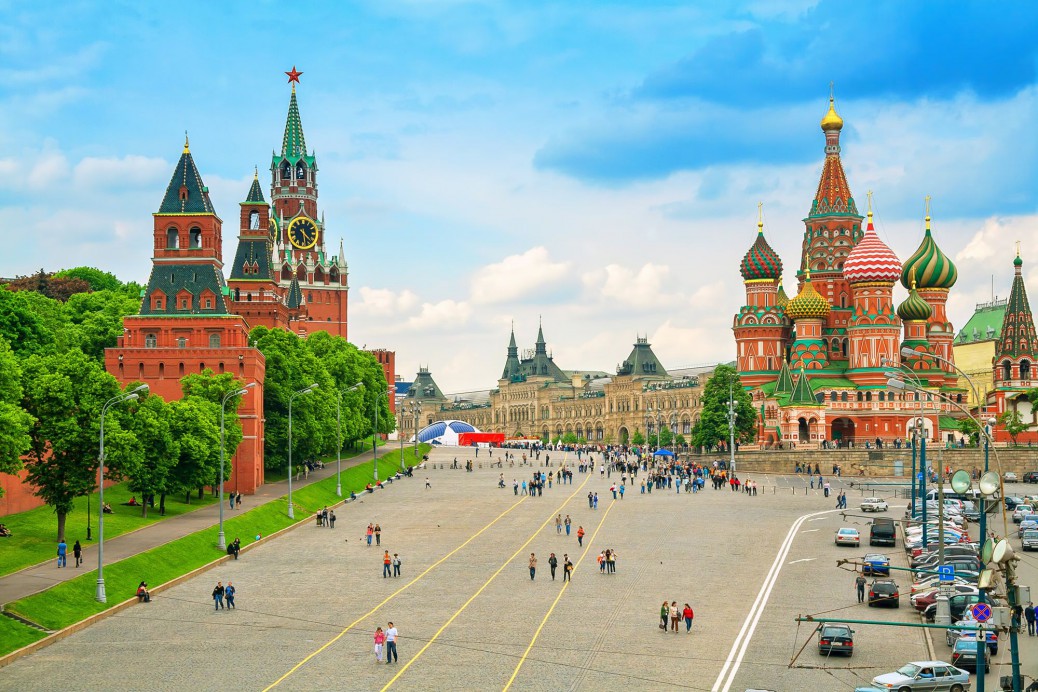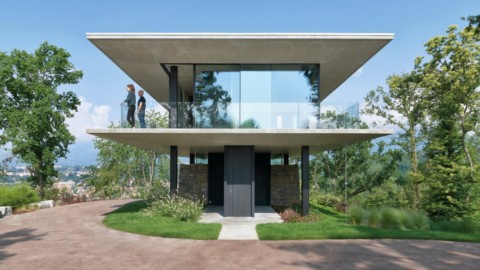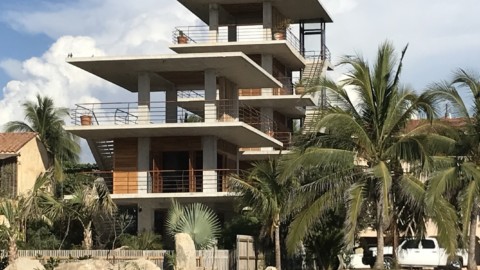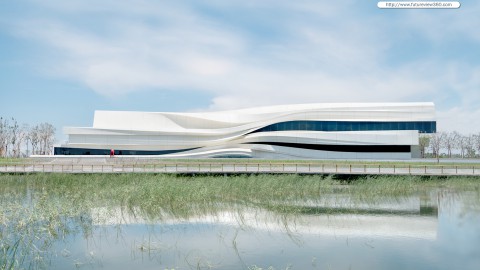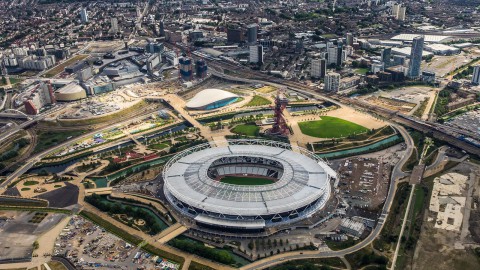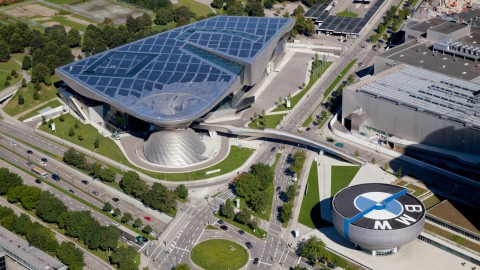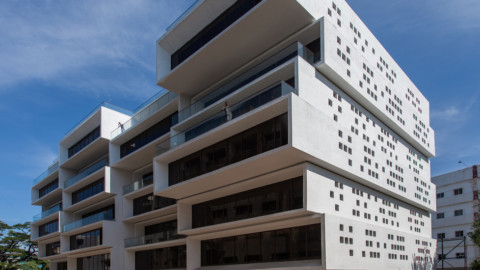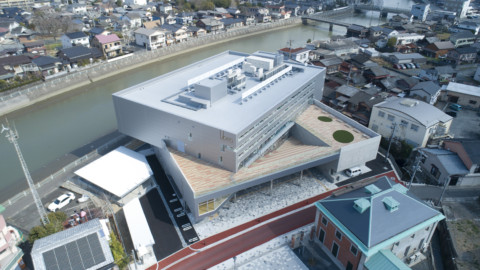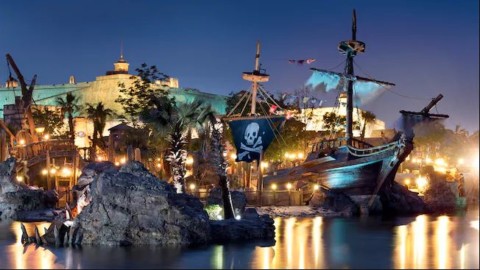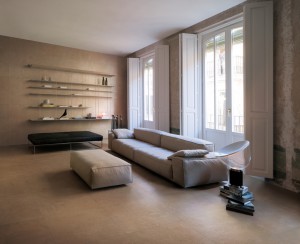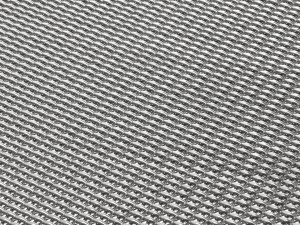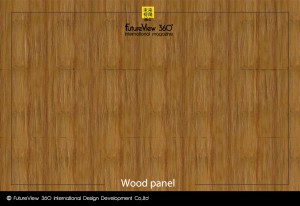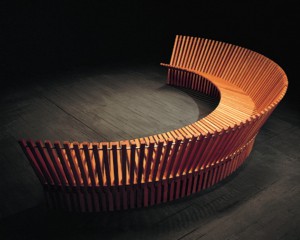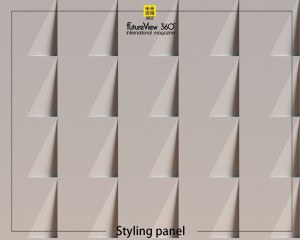Red Square 紅場
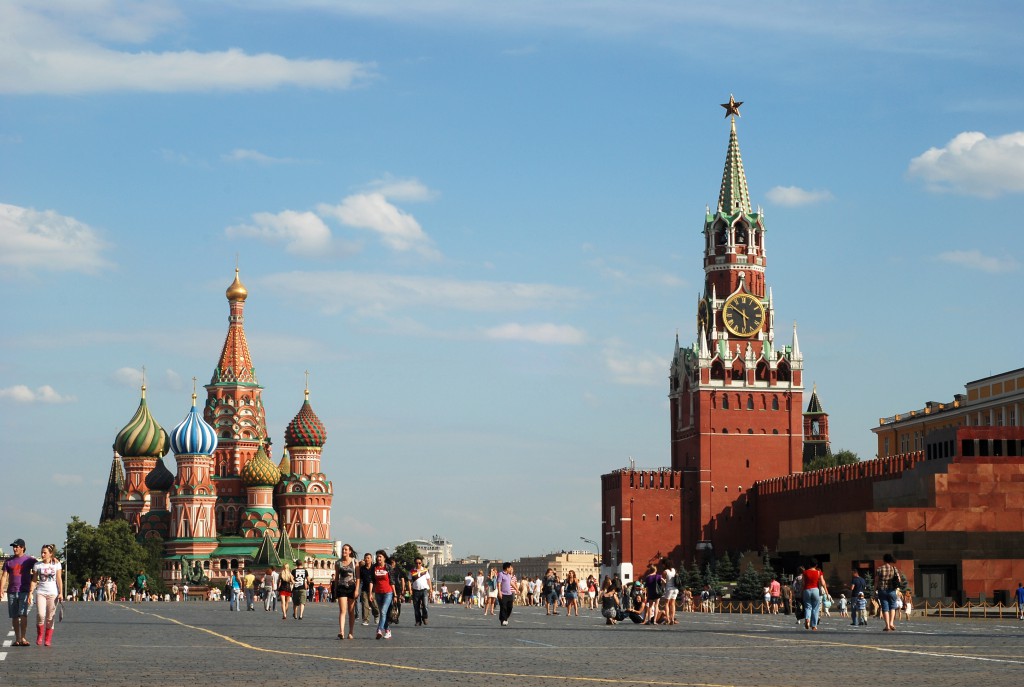
Red Square (Russian: Кра́сная пло́щадь, tr. Krásnaya plóshchaď, IPA: [ˈkrasnəjə ˈploɕːətʲ]) is a city square in Moscow, Russia. It separates the Kremlin, the former royal citadel and now the official residence of the President of Russia, from a historic merchant quarter known as Kitai-gorod. Red Square is often considered to be the central square of Moscow since the city’s major streets, which connect to Russia’s major highways, originate in the square.
紅場(俄語:Краснаяплощадь,tr.Krásnayaspóshchaď,IPA:[krasnəjəploɕːətʲ])是俄羅斯莫斯科的城市廣場。 它將克里姆林宮(前皇家城堡,現在是俄羅斯總統的官邸)與歷史悠久的商業區(即Kitai-gorod)區分開來。 紅場通常被認為是莫斯科的中心廣場,因為連接俄羅斯主要公路的城市主要街道起源於廣場。
Location:Moscow, Russia
Criteria:Cultural: i, ii, iv, vi
Reference:545
Inscription:1990 (14th Session)
Coordinates:55°45′15″N 37°37′12″E
地點:俄羅斯莫斯科
標準:文化:i,ii,iv,vi
參考:545
題詞:1990年(第14屆)
坐標:55°45’15“N 37°37’12”E
Origin and name
The name Red Square originates neither from the pigment of the surrounding bricks (which, in fact, were whitewashed at certain periods) nor from the link between the colour red and communism. Rather, the name came about because the Russian word красная (krasnaya), which means “red” is related to the word красивая (‘krasivaya’) meaning “beautiful,” was applied to a small area between St. Basil’s Cathedral, the Spassky Tower of the Kremlin, and the herald’s platform called Lobnoe Mesto (contrary to the common misconception, it actually never was a place of execution), and Tsar Alexei Mikhailovich officially extended the name to the entire square, which had previously been called Pozhar, or “burnt-out place”, in reference to the fact that several buildings had to be burned down to make place for the square. Several ancient Russian towns, such as Suzdal, Yelets, and Pereslavl-Zalessky, have their main square named Krasnaya ploshchad.
起源和名稱
紅場這個名字既不是來自周圍磚塊的顏料(事實上,它在某些時期被粉飾),也不是源於紅色和共產主義之間的聯繫。 相反,這個名字的出現是因為俄語單詞красная(krasnaya),意思是“紅色”與красивая(’krasivaya’)這個詞有關,意思是“美麗”,被應用於聖巴西爾大教堂,斯帕斯基之間的一個小區域。 克里姆林宮的塔,以及稱為Lobnoe Mesto的先驅的平台(與常見的誤解相反,它實際上從來不是一個執行的地方),沙皇阿列克謝米哈伊洛維奇正式將這個名字擴展到整個廣場,之前被稱為波扎爾,或者 “燒毀的地方”,指的是幾座建築物必須被燒毀才能成為廣場的地方。 蘇茲達爾,耶路撒冷和佩列斯拉夫爾 – 扎列斯基等幾個古老的俄羅斯城鎮的主要廣場名為Krasnaya ploshchad。
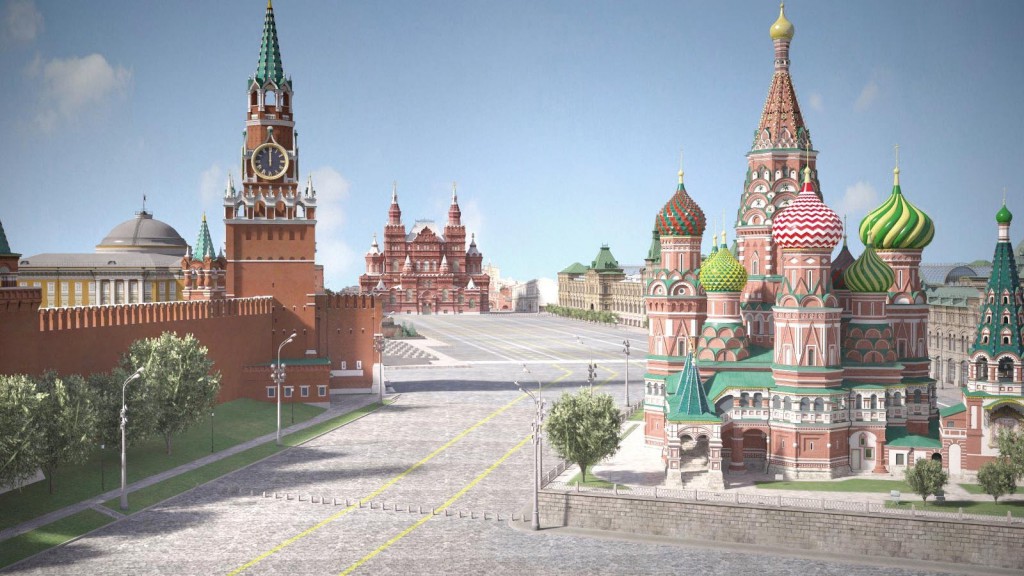
History
The rich history of Red Square is reflected in many paintings by Vasily Surikov, Konstantin Yuon and others. The square was meant to serve as Moscow’s main marketplace. It was also the site of various public ceremonies and proclamations, and occasionally a coronation for Russia’s Tsars would take place. The square has been gradually built up since that point and has been used for official ceremonies by all Russian governments since it was established.
歷史
Vasily Surikov,Konstantin Yuon等人的許多畫作都反映了紅場的豐富歷史。 廣場本來是莫斯科的主要市場。 它也是各種公共儀式和宣言的網站,偶爾會為俄羅斯的沙皇加冕。 自那時起,這個廣場逐漸建成,自成立以來一直被所有俄羅斯政府用於官方儀式。
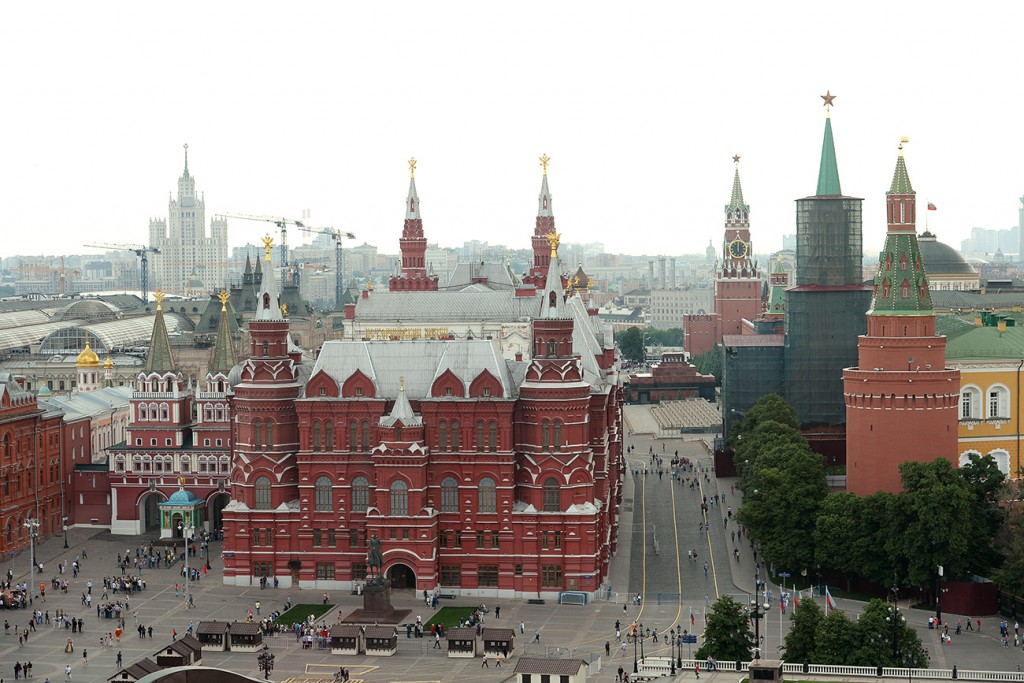
Main sights
The buildings surrounding the Square are all significant in some respect. Lenin’s Mausoleum, for example, contains the embalmed body of Vladimir Ilyich Lenin, the founder of the Soviet Union. Nearby to the South is the elaborate brightly domed Kremlin and the palaces and cathedrals of the Saint Basil’s Cathedral.
On the Eastern side of the square is the GUM department store, and next to it the restored Kazan Cathedral. The Northern side is occupied by the State Historical Museum, whose outlines echo those of Kremlin towers. The Iberian Gate and Chapel have been rebuilt to the Northwest.
Previously, the flags of the Soviet Republics were flown there until 1987. The flagpoles were then removed in the late 1990s.
The only sculptured monument on the square is a bronze statue of Kuzma Minin and Dmitry Pozharsky, who helped to clear Moscow from the Polish invaders in 1612, during the Time of Troubles. Nearby is the so‑called Lobnoye Mesto, a circular platform where public ceremonies used to take place. Both the Minin and Pozharskiy statue and the Lobnoye Mesto were once located more centrally in Red Square but were moved to their current locations to facilitate the large military parades of the Soviet era. The square itself is around 330 meters (1,080 feet) long and 70 meters (230 feet) wide.
主要景點
廣場周圍的建築在某些方面都很重要。例如,列寧的陵墓包含了蘇聯創始人弗拉基米爾·伊里奇·列寧的防腐屍體。靠近南部的是精緻明亮的圓頂克里姆林宮以及聖巴西爾大教堂的宮殿和大教堂。
廣場的東側是GUM百貨商店,旁邊是經過修復的喀山大教堂。北側被國家歷史博物館所佔據,其大綱與克里姆林宮的塔樓相呼應。伊比利亞門和教堂已經重建到西北地區。
以前,蘇維埃共和國的旗幟一直飛到那裡直到1987年。然後在20世紀90年代後期拆除了旗桿。
廣場上唯一的雕刻紀念碑是Kuzma Minin和Dmitry Pozharsky的銅像,他們在1612年的麻煩時期幫助波蘭入侵者清除了莫斯科。附近就是所謂的Lobnoye Mesto,這是一個通常舉行公共儀式的圓形平台。 Minin和Pozharskiy雕像以及Lobnoye Mesto曾經位於紅場的中心位置,但被移到現在的位置,以促進蘇聯時代的大型軍事遊行。廣場本身長約330米(1,080英尺),寬70米(230英尺)。

Lenin’s Mausoleum 列寧的陵墓
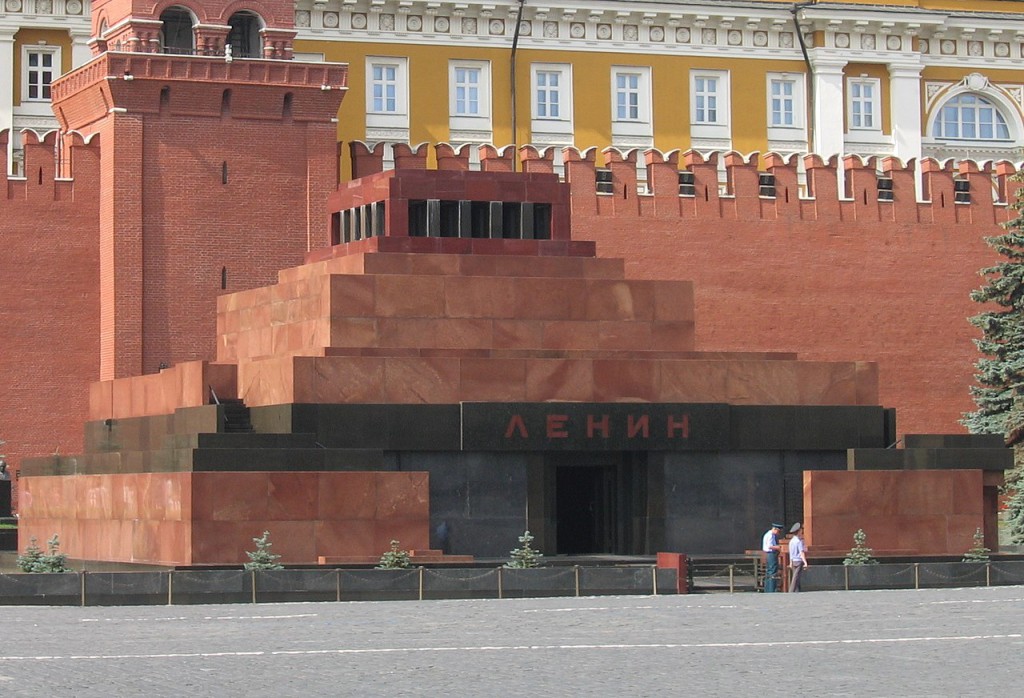
Kremlin 克里姆林宮
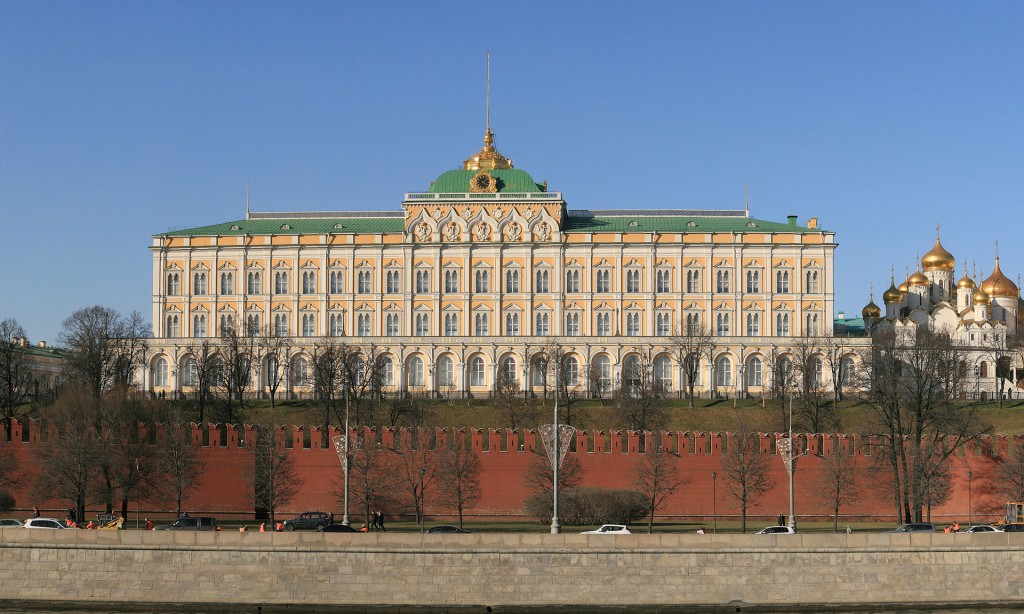
Saint Basil’s Cathedral 聖巴西爾大教堂
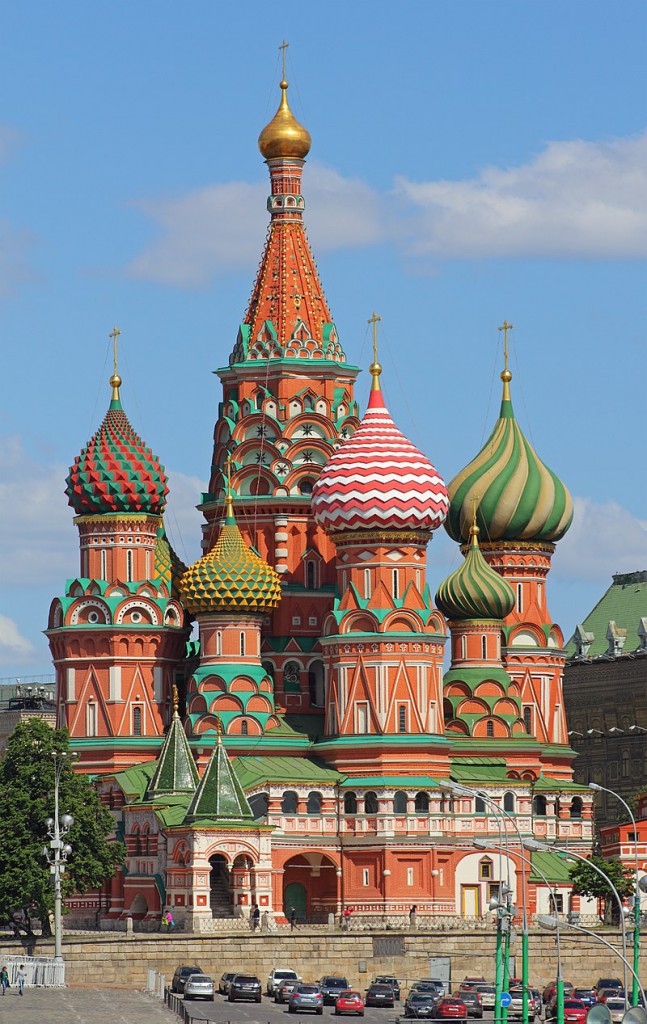
GUM (department store) 口香糖(百貨商店)
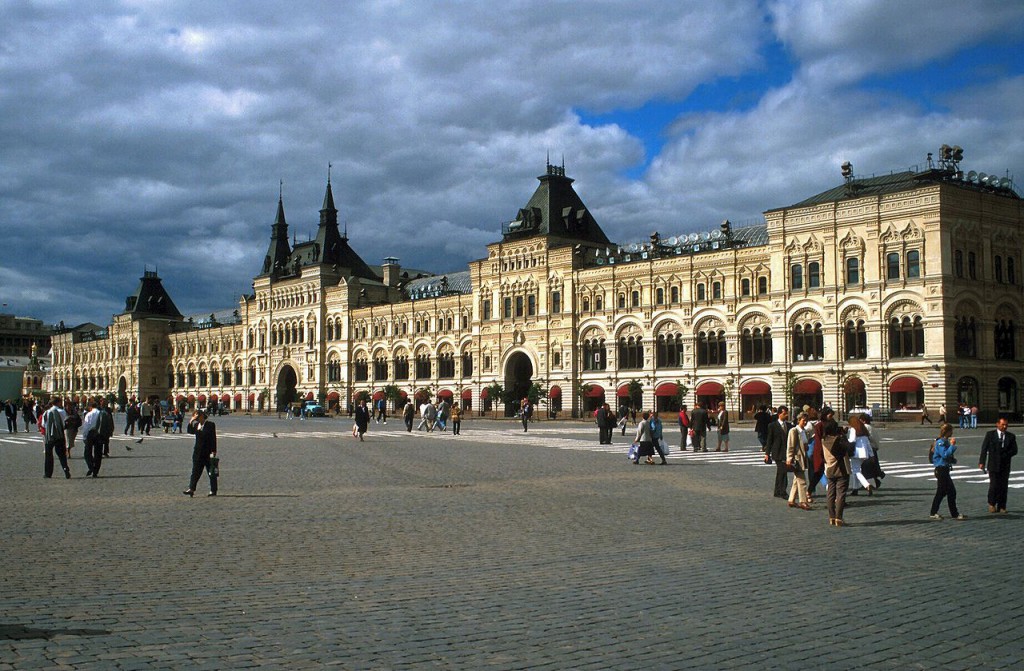
Kazan Cathedral 喀山大教堂
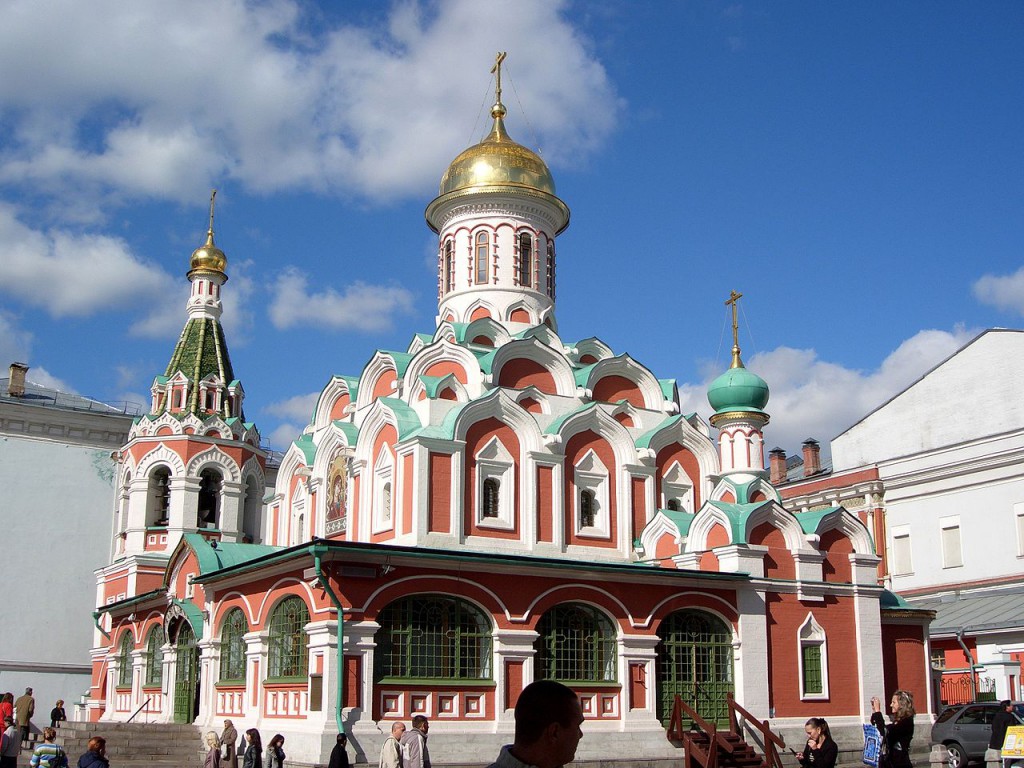
State Historical Museum 國家歷史博物館

Iberian Gate and Chapel 伊比利亞門和教堂
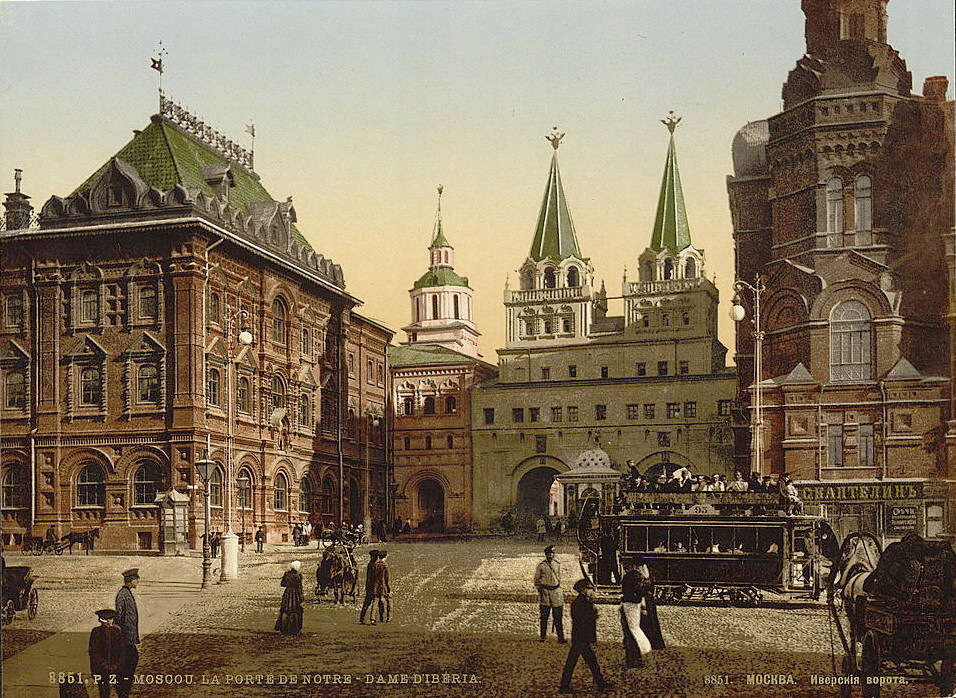
Monument to Minin and Pozharsky 米寧和波扎爾斯基的紀念碑
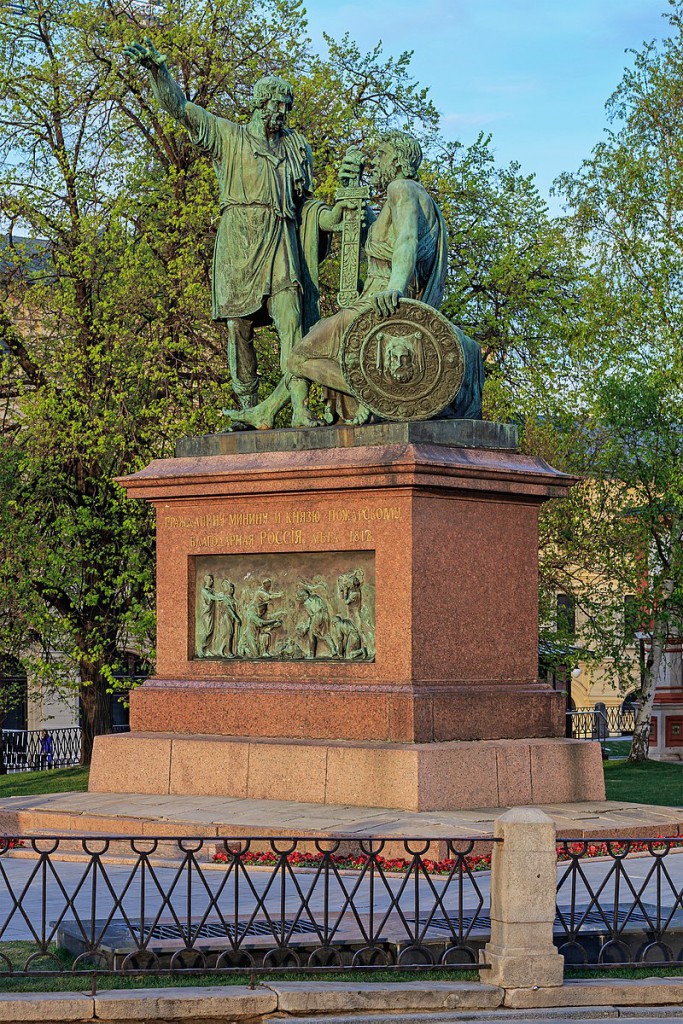
Lobnoye Mesto
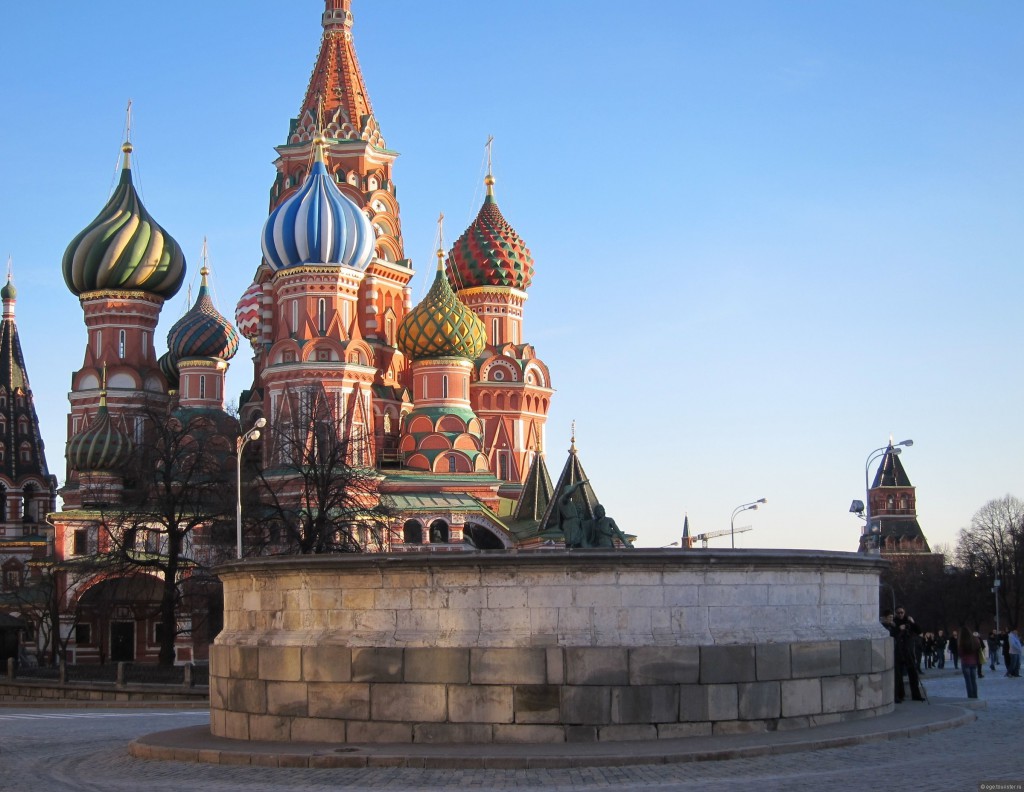
FROM:https://en.wikipedia.org/wiki/Red_Square
Monument to Minin and Pozharsky 米寧和波扎爾斯基的紀念碑
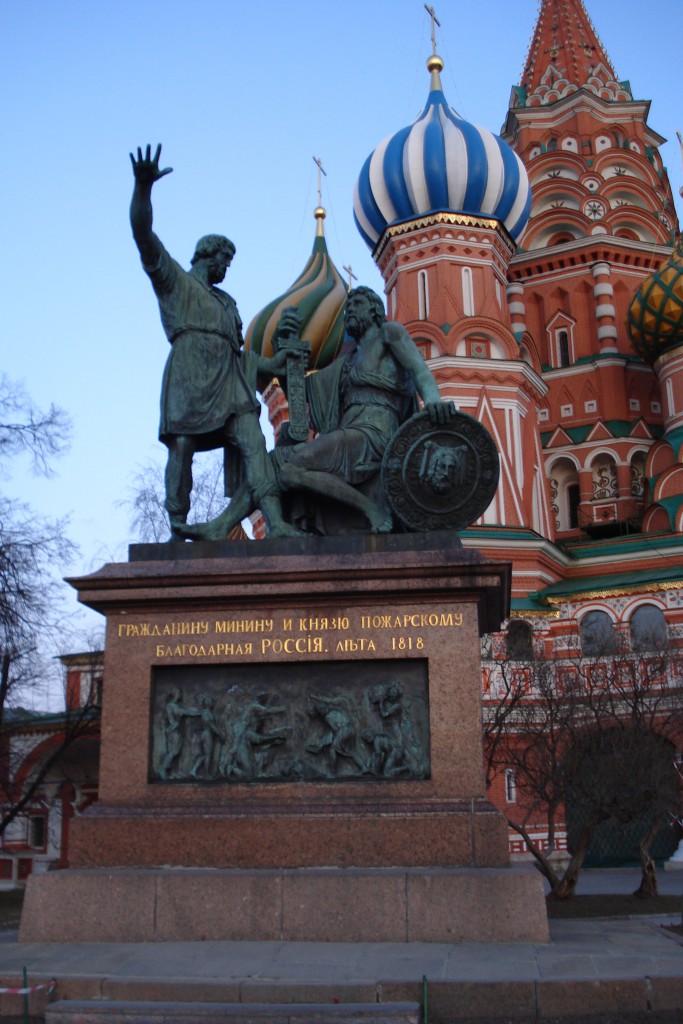
The Monument to Minin and Pozharsky (Russian: Па́мятник Ми́нину и Пожа́рскому) is a bronze statue on Red Square in Moscow, Russia, in front of Saint Basil’s Cathedral. The statue commemorates Prince Dmitry Pozharsky and Kuzma Minin, who gathered an all-Russian volunteer army and expelled the forces of the Polish-Lithuanian Commonwealth under the command of King Sigismund III of Poland from Moscow, thus putting an end to the Time of Troubles in 1612.
The monument was conceived by the Free Society of Lovers of Literature, Science, and the Arts to commemorate the 200th anniversary of those events. Construction was funded by public conscription in Nizhny Novgorod, the city from where Minin and Pozharsky came to save Moscow. Tsar Alexander I, however, decided the monument should be installed on Red Square next to the Moscow Kremlin rather than in Nizhny Novgorod. The competition for the best design was won by the celebrated sculptor Ivan Martos in 1808. Martos completed a model, which was approved by Dowager Empress Maria Feodorovna and the Russian Academy of Fine Arts in 1813. Casting work using 1100 lbs of copper was carried out in 1816 in St Petersburg. The base, made of three massive blocks of granite from Finland, was also carved at St Petersburg. Moving the statue and base to Moscow presented logistical challenges and was accomplished in winter by using the frozen waterways. However, in the wake of Napoleon’s invasion of Russia, the monument could not be unveiled until 1818.
The front of the base carries a bronze plaque depicting a scene of patriotic citizens sacrificing their property for the benefit of the motherland. On the left is an image of the sculptor Martos giving away his two sons (one of whom was killed in 1813)
Originally, the statue stood in the centre of Red Square, with Minin extending his hand towards the Moscow Kremlin. However, after the 1917 Revolution, the Communist authorities found the monument was obstructing parades on the square and discussed its demolition or transfer to some indoor museum. In 1936, the statue was moved closer to the cathedral where it remains to the present day.
On the first celebration of the Unity Day (November 4, 2005) an almost exact copy of this monument by Zurab Tsereteli was erected in Nizhny Novgorod. The copy is only 5 cm shorter than the Moscow original.
米寧和波扎爾斯基紀念碑(俄語:ПамятникМининуиПожарскому)是俄羅斯莫斯科紅場的一座青銅雕像,位於聖巴西爾大教堂前。雕像紀念王子德米特里·波扎爾斯基和庫茲馬·米寧,他們聚集了一支全俄志願軍,並在莫斯科國王西吉斯蒙德三世的指揮下驅逐了波蘭 – 立陶宛聯邦的軍隊,從而結束了麻煩時期。 1612。
紀念碑是由文學,科學和藝術愛好者自由社會構思的,以紀念這些活動200週年。建築工作由下諾夫哥羅德(Nizhny Novgorod)的公共徵兵資助,Minin和Pozharsky來自莫斯科。然而,沙皇亞歷山大一世決定將紀念碑安裝在莫斯科克里姆林宮旁邊的紅場而不是下諾夫哥羅德。最佳設計的競爭由著名雕塑家伊万·馬托斯於1808年贏得。馬托斯完成了一個模型,該模型於1813年獲得太后瑪麗亞·費奧多羅夫娜和俄羅斯美術學院的批准。使用1100磅銅進行鑄造工作1816年在聖彼得堡。該基地由芬蘭的三塊巨大花崗岩塊組成,也在聖彼得堡雕刻而成。將雕像和基地搬到莫斯科提出了後勤方面的挑戰,並在冬季使用冷凍水道完成。然而,在拿破崙入侵俄羅斯之後,這座紀念碑直到1818年才被揭開。
基地的正面有一塊青銅牌匾,描繪了愛國公民犧牲自己的財產以造福祖國的場景。左邊是雕塑家馬托斯贈送他的兩個兒子的形象(其中一個兒子於1813年被殺)
最初,雕像站在紅場的中心,米寧向莫斯科克里姆林宮伸出手。然而,在1917年革命之後,共產黨當局發現這座紀念碑阻礙了廣場上的遊行並討論了拆除或轉移到一些室內博物館。 1936年,雕像被移近了大教堂,直到今天。
在團結日的第一次慶祝活動(2005年11月4日),Zurab Tsereteli的這座紀念碑的幾乎完全複製品在下諾夫哥羅德豎立起來。該副本僅比莫斯科原件短5厘米。
Coordinates:55.752778°N 37.6225°E
Location:Red Square, Moscow, Russia
Designer:Ivan Martos
Material:bronze
Beginning date:1816
Completion date:1818
坐標:55.752778°N 37.6225°E
地點:紅場,莫斯科,俄羅斯
設計師:Ivan Martos
材料:青銅
開始日期:1816年
完成日期:1818年
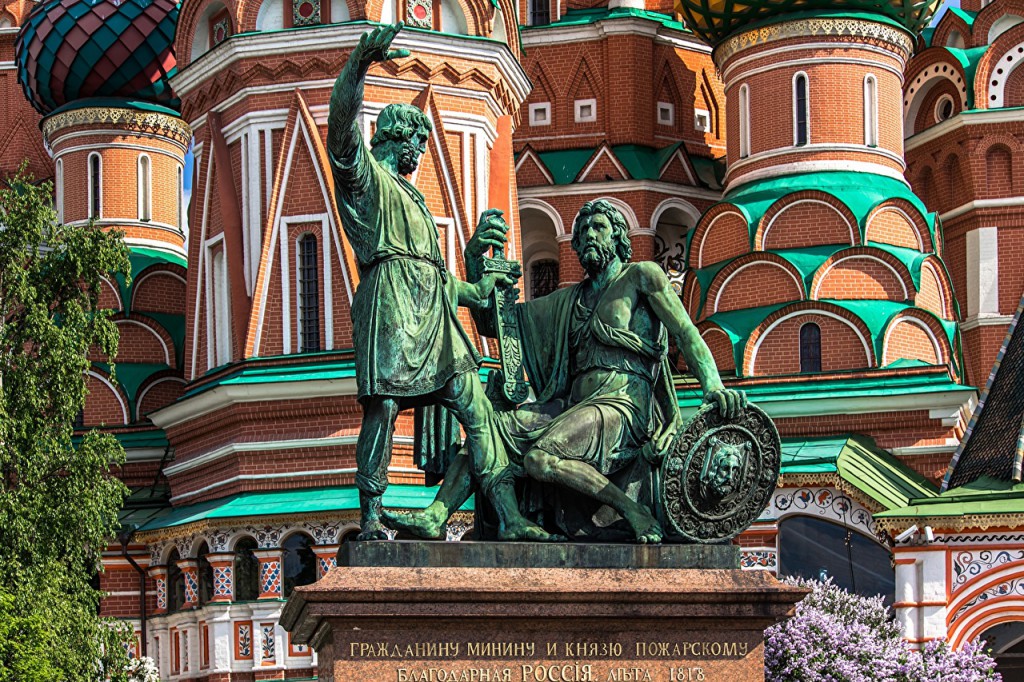
FROM:https://en.wikipedia.org/wiki/Monument_to_Minin_and_Pozharsky
Lobnoye Mesto
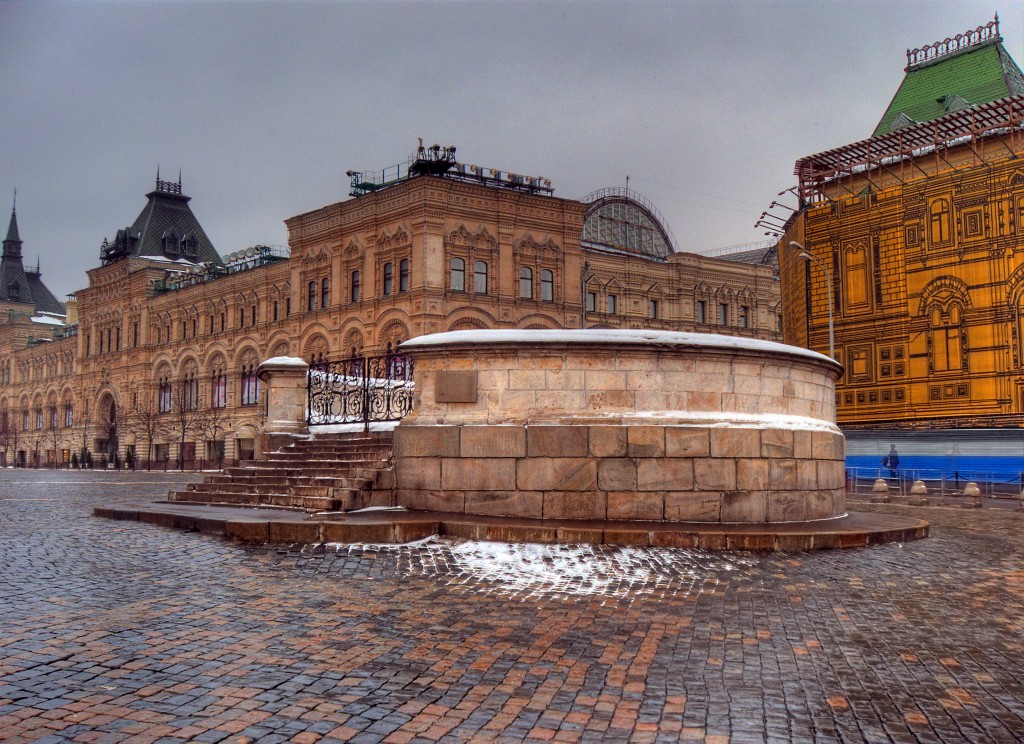
Lobnoye mesto (Russian: Лобное место) is a 13-meter-long stone platform situated on Red Square in Moscow in front of Saint Basil’s Cathedral.
Its name is derived from the Russian words for “forehead” (lob) and “place” (Mesto). In old Russian lob meant a steep river bank. The platform, believed to have been constructed in brick in the 1530s, was first mentioned in 1547, when Ivan the Terrible addressed the Muscovites from there. Subsequently, it was primarily used for announcing the tsar’s ukazes and for religious ceremonies. Despite a common misconception, the circular platform itself was never a place for executions. Sometimes scaffolds were placed by it, but usually public executions were carried out at Vasilevsky Spusk behind St. Basil’s Cathedral.
In the Russian Empire, during Holy Week, the Palm Sunday procession called “donkey walk” would end at the Lobnoye Mesto where a depiction of Calvary had been erected. The Tsar himself, on foot to show humility, would lead the Patriarch of Moscow, who was seated on a donkey, in a procession from the city gates to Red Square.
The nearby Monument to Minin and Pozharsky commemorates the events of 1612, when Prince Pozharsky ascended the Lobnoye Mesto to pronounce Moscow free from Polish occupation. In 1786, the architect Matvei Kazakov had the Lobnoye Mesto rebuilt in white stone while keeping its original location and proportions.
Lobnoye mesto(俄語:Лобноеместо)是一個13米長的石頭平台,位於莫斯科紅場,聖巴西爾大教堂前。
它的名字來源於俄語中的“額頭”(lob)和“地方”(Mesto)。在古老的俄羅斯高架意味著一個陡峭的河岸。該平台據信是在1530年代用磚砌成的,於1547年首次提到,當時伊凡雷帝從那裡向莫斯科人發表講話。隨後,它主要用於宣布沙皇的ukazes和宗教儀式。儘管存在一種常見的誤解,但循環平臺本身從未成為執行的地方。有時腳手架被放置,但通常公共處決是在St. Basil’s大教堂後面的Vasilevsky Spusk進行的。
在俄羅斯帝國,在聖週期間,稱為“驢行走”的棕櫚星期日遊行將在Lobnoye Mesto結束,在那裡建立了對Cal髏地的描繪。沙皇本人徒步表現出謙遜,將帶領坐在驢上的莫斯科族長,從城門到紅場的遊行隊伍。
附近的Minin和Pozharsky紀念碑紀念1612年的事件,當時Pozharsky王子登上Lobnoye Mesto,宣布莫斯科不受波蘭佔領。 1786年,建築師Matvei Kazakov將Lobnoye Mesto重建為白色石頭,同時保留其原始位置和比例。
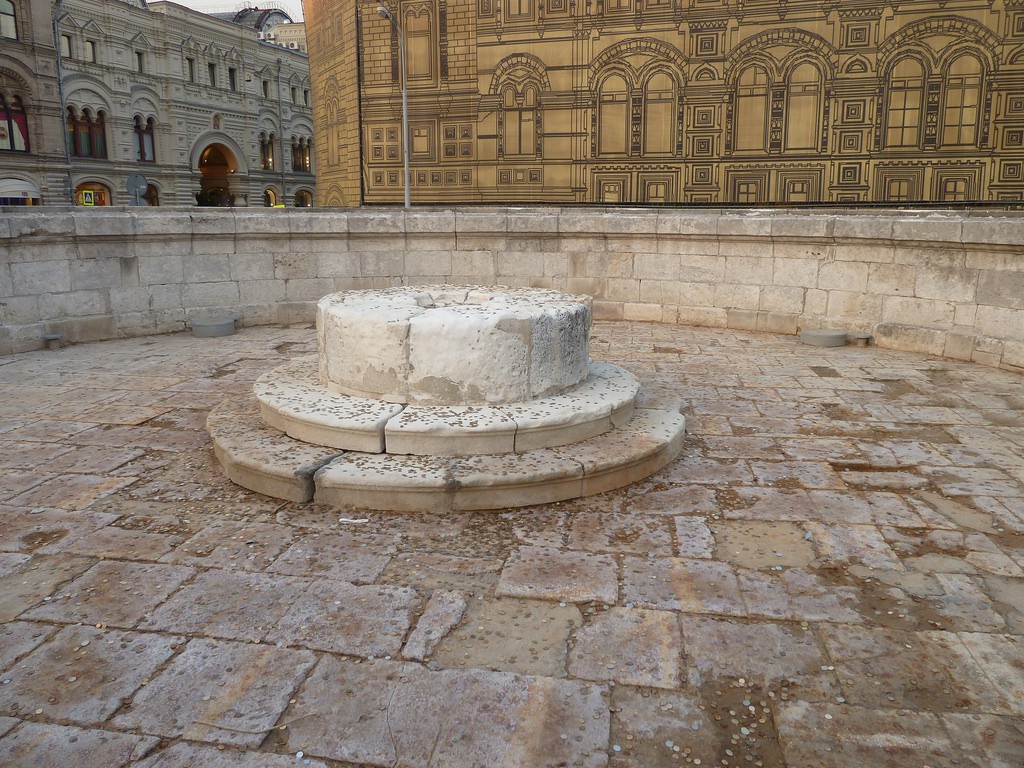
FROM:https://en.wikipedia.org/wiki/Lobnoye_Mesto
FROM:Red Square in MOSCOW, RUSSIA: Saint Basil’s Cathedral tour + GUM (Vlog 2)
FROM:Red Square, Moscow
Don’t you think it’s addictive?
Want to know more about the beauty of architecture?
Come and join our members to explore the beauty of architectural design.
覺得看得不過癮嗎?
想要知道更多建築之美嗎?
快來加入我們的會員,一同探索建築設計之美。
The above article is purely for appreciation and sharing purposes, as well as the construction of new technology and the public can be in-depth understanding of the information at the same time there are sources, will be able to query, no use of the document as a commercial transaction, if illegal, please inform the We will immediately remove the site, thank you for cooperation.
以上文章純粹作為欣賞及分享用途,以及將建築新型技術傳遞給與大眾能夠深入了解,同時資料還有來源,將可查詢,絕無使用該文件資料作為商業交易行為,如有違法請務必告知該網站我們將立即處理撤除,謝謝合作。

